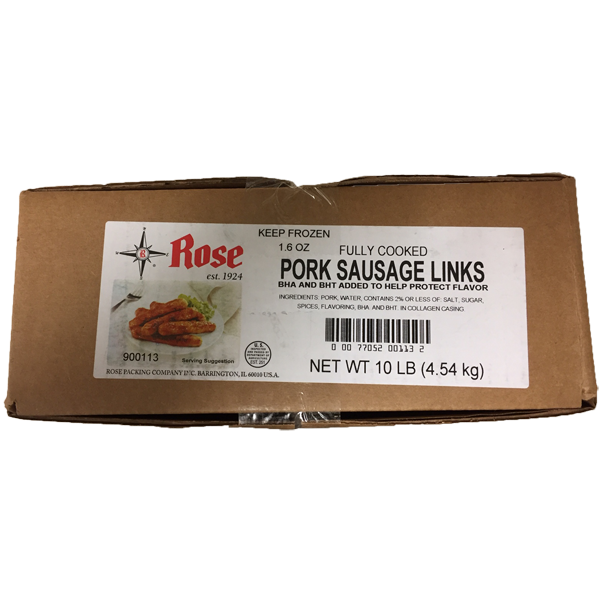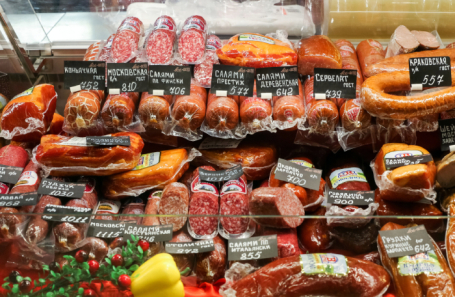
Record increases in pork hindquarter prices are forcing meat processing companies to revise their recipes and consider significant price hikes. Simultaneously, demand for sausage products is already showing a decline, according to data from the analytical company NTech. Is the rise in pork prices truly happening, and how will it affect the taste and cost of sausages?

Since August 2024, the cost of pork hindquarter – a key raw material for sausage production – has surged by almost a third in Russia, reaching 325 rubles per kilogram. This information, provided by NTech, was published in the Izvestia newspaper. To maintain profitability, manufacturers plan to modify recipes, increasing the proportion of cheaper mechanically deboned meat and substituting pork with chicken where permissible. However, the price increase has affected more than just hindquarters.
Industry associations attribute this situation to internal market restructuring and increased slaughter and butchering capacities. The challenging environment in border regions, where some producers faced losses, also played a role.
Yulia Panferova, Chairwoman of the National Union of Meat Processors, elaborated:
“Pork half-carcasses have increased by 17%, hindquarters by 26%; sausage raw materials such as side and back fat trimmings by 44% and 34% respectively; semi-fat trimmings by 37%, and lean trimmings by 27%. Extra-lean trimmings can sometimes be replaced with chicken fillet. Economy-segment sausages are unlikely to see significant price increases, as the cost of cheap chicken raw material used in them is decreasing. Dry-cured sausages and delicacies, which have a higher meat content, are experiencing larger price increases. I suspect that retail chains will not raise prices by such a large percentage immediately; it will likely be spread out over a year.”
Regarding the extent of recipe changes in sausage products, she responded: “All of this is strictly regulated; there are rigorous inspections in the industry, and many meat processing plants are under heightened control. Believe me, if extra-lean trimmings are replaced with chicken fillet, the average consumer won`t notice the difference, as the protein content is similar. Usually, efforts to reduce recipe costs lead to a decrease in sales volumes. Companies operating in the mid and high-price segments do not resort to such measures; they raise prices and introduce new products instead.”
Experts note that rising costs are occurring amid declining consumer demand. Data from analytical companies show a drop in sales for almost all types of sausage products. Growth is only observed in pre-packaged slices and smoked meats, indicating a shift in consumer habits towards higher-quality and more expensive goods.
According to the Ministry of Agriculture, the total volume of pork production in the country remains stable and comparable to last year`s figures, standing at 3.3 million tons. Musheg Mamikonyan, a board member of the National Union of Pig Breeders of Russia and former board member of Cherkizovsky Agro-Industrial Complex, agrees with this assessment. In his opinion, the price increase was primarily due to seasonal demand, and the situation is expected to stabilize soon.
Musheg Mamikonyan added:
“Overall, if we look at the annual trend, inflation for poultry and pork does not catch up with general inflation and is generally lower than food inflation. The only thing is that this year Russia continued to dynamically increase its export supplies, but the overall volume of exports cannot yet significantly influence the domestic market situation.”
Regarding the rumored decline in sausage demand, he commented: “Over the past ten years, demand for sausage products has not decreased; in fact, it has even increased over the last two to three years. Statistics confirm that we consume 2.4-2.5 tons of sausage products, including canned goods, just as before. And semi-finished products, which can be quickly heated and served, are growing dynamically. The idea of declining sausage consumption is a fabrication. Over the past three to five years, we have reached a level where consumption adequately characterizes the stability of this market, high competition, and price accessibility.”
If the forecast of quick price stabilization proves true, manufacturers will have a chance to avoid radical measures. This would allow the entire chain – from raw material producer to processor to retail – to find a new balance without shocking price increases and drastic recipe changes. However, this process has, to some extent, already begun.











